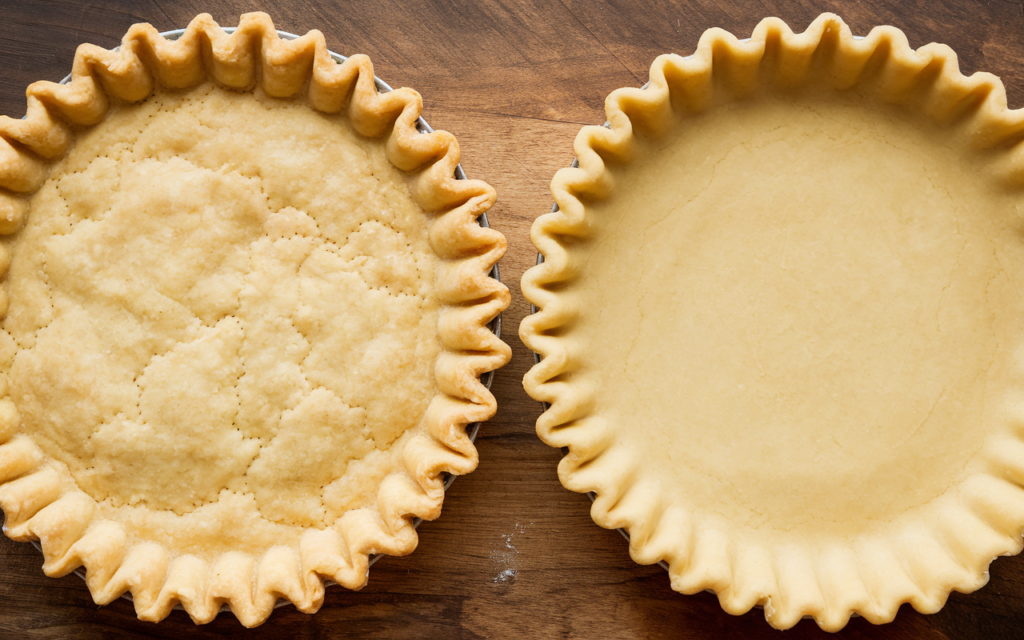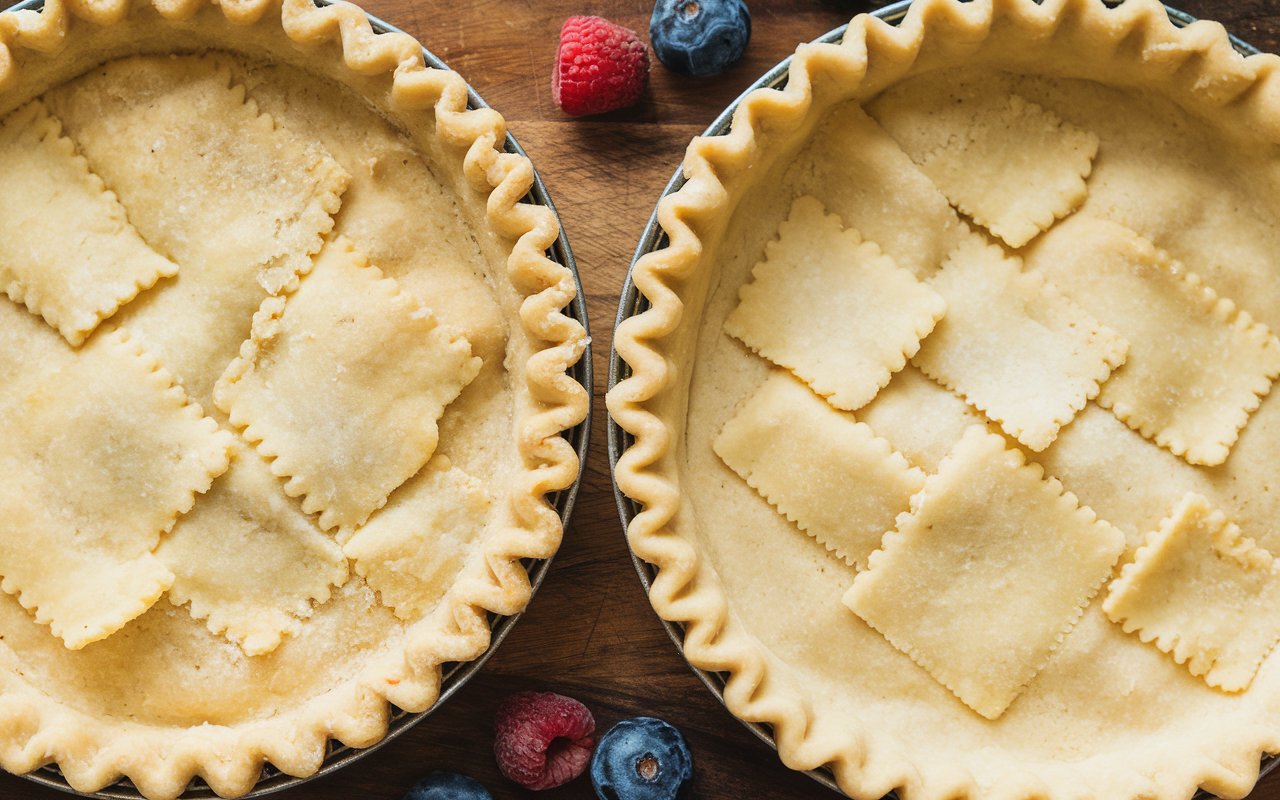When it comes to making the perfect pie crust, one of the most debated questions is: Is pie crust better with butter or Crisco? Both fats have their advantages, but the choice between them can greatly affect the texture, flakiness, and flavor of your crust. Whether you’re a seasoned baker or a beginner, understanding the differences between butter and Crisco is key to achieving your ideal pie. In this article, we’ll break down the pros and cons of each fat, and help you decide which one is best for your next pie crust.
Pie crusts are a key component of many beloved desserts, and the debate over whether butter or Crisco produces the best crust is ongoing. Pie enthusiasts and bakers alike have strong preferences when it comes to the fat used in their crusts. Butter is known for its rich flavor and flaky texture, while Crisco (a brand of vegetable shortening) promises a tender, melt-in-your-mouth crust.
The key to deciding whether pie crust is better with butter or Crisco lies in understanding the differences between these two fats and how they interact with the other ingredients in your crust. This article will dive into these distinctions, providing you with all the information you need to choose the right fat for your pie crust.
What is the Difference Between Butter and Crisco in Pie Crust?
Both butter and Crisco are used in pie crusts to provide the necessary fat that creates a tender and flaky texture. However, there are some key differences between these two ingredients:
- Butter: Made from cream, butter is a dairy product with a high water content (around 15-20%). This water can contribute to steam during baking, which helps create flaky layers in the crust. Additionally, butter brings a rich, creamy flavor that many people associate with a classic pie crust.
- Crisco: Crisco is a type of vegetable shortening made from hydrogenated oils. It has a higher fat content than butter (100% fat) and no water. This makes Crisco particularly effective at producing a very tender and crisp crust. However, Crisco lacks the rich, dairy flavor that butter imparts to baked goods.
The Impact on Flavor: Butter vs. Crisco
- Butter: One of the most significant reasons bakers choose butter for their pie crust is for the flavor. Butter imparts a rich, slightly sweet, and creamy taste to the crust, which enhances the overall flavor of the pie. For many, the flavor of butter in a pie crust is irreplaceable. The unmistakable taste of butter can complement both sweet and savory pies, making it a favorite for many home bakers.
- Crisco: While Crisco produces a tender crust, it doesn’t contribute the same flavor depth that butter does. Instead, Crisco creates a neutral, slightly greasy taste. This can be beneficial for pies where the filling is the star, and you don’t want the crust to compete with the flavors inside. However, if you’re looking for a rich, buttery flavor in your crust, Crisco might not be the best choice.
The Texture: Flaky vs. Tender
- Butter: When used in pie crust, butter helps create flaky layers. The water content in butter turns to steam during baking, causing the layers of dough to separate and puff up. This results in a pie crust that’s light, flaky, and crisp. However, butter’s relatively lower fat content compared to shortening can make it harder to achieve the same level of tenderness as Crisco.
- Crisco: Crisco, being 100% fat and containing no water, produces a tender and slightly crumbly crust. Since it lacks water, Crisco doesn’t create steam pockets, which results in a more tender texture. The texture of a Crisco-based pie crust is often softer and less flaky than one made with butter, but it can still be deliciously tender.
Which is Better for Pie Crust: Butter or Crisco?
Now that we’ve examined the main differences between butter and Crisco, it’s time to weigh the pros and cons of each fat and determine which one is better suited for your pie crust.
Pros of Using Butter in Pie Crust
- Rich Flavor: Butter adds a distinctive, delicious flavor to your pie crust, enhancing the taste of both sweet and savory pies.
- Flakiness: The steam generated by butter during baking creates a flaky, crispy crust that many bakers and pie lovers prefer.
- Natural Ingredient: Butter is a natural fat, and for those who prioritize whole foods, it’s a more wholesome option than Crisco.
Cons of Using Butter in Pie Crust
- Tougher Texture in Warm Environments: Butter can soften and melt quickly in warm environments, which can make it difficult to handle when making pie dough. You’ll need to keep everything chilled to achieve the best results.
- Higher Risk of Dryness: Due to its water content, butter-based dough can dry out more quickly if not handled properly.
Pros of Using Crisco in Pie Crust
- Tender Texture: Crisco’s high-fat content produces a tender, melt-in-your-mouth crust that is less likely to become tough or dry.
- Easier to Handle: Since Crisco doesn’t soften as easily as butter, it’s easier to work with, especially in warm kitchens.
- Reliable Results: Crisco is less likely to produce a dry or crumbly crust, which can be helpful for novice bakers.
Cons of Using Crisco in Pie Crust
- Lacks Flavor: Crisco doesn’t add the same rich flavor to the pie crust as butter does, which can be a downside for those who prioritize taste.
- Less Flaky: Crisco-based crusts tend to be less flaky than butter-based crusts, which may not appeal to those who love that delicate, crispy texture.
Can You Use Both Butter and Crisco in Pie Crust?
Many bakers opt for a combination of butter and Crisco in their pie crust recipes. By using both fats, you can enjoy the best of both worlds: the rich flavor of butter and the tenderness of Crisco. The result is a pie crust that’s both flavorful and tender, with a satisfying level of flakiness.
A typical ratio for combining butter and Crisco in pie crust is 50/50, but you can adjust it to suit your preferences. Experiment with different ratios to find the perfect balance of flavor, texture, and tenderness.
Tips for Making the Perfect Pie Crust
Regardless of whether you choose butter or Crisco for your pie crust, there are several tips that can help ensure your crust turns out perfectly every time.
- Keep Everything Cold: The key to a flaky pie crust is keeping the fat (whether butter or Crisco) as cold as possible. This prevents the fat from fully integrating with the flour, allowing it to create those delicious flaky layers when baked.
- Use the Right Flour: Use all-purpose flour for most pie crusts. For extra flakiness, you can try using a combination of all-purpose and cake flour.
- Don’t Overwork the Dough: Overworking the dough can lead to a tough crust. Handle it gently and only mix it enough to bring it together.
- Chill the Dough: After making the dough, wrap it in plastic wrap and refrigerate it for at least 30 minutes before rolling it out. This helps prevent the fat from melting too quickly during baking.
1. The Science Behind Pie Crusts: Why Fat Matters
Understanding the science of pie crusts is crucial when deciding whether butter or Crisco is better for your pie. Both fats impact the texture, flakiness, and flavor of the crust. This section can explore how different fats behave in dough, creating the ideal balance of tenderness and crispiness.
-
- The Science of Pie Crust: A Beginner’s Guide – A detailed explanation of how fats affect pie crusts.
- How Fat Affects Dough – A source discussing fat’s role in dough texture.
-
- How to Make the Perfect Pie Crust – Link to an internal article that teaches the basic pie crust-making process.
2. Butter vs. Crisco: A Flavor and Texture Comparison
Dive deeper into how butter contributes to the flavor, while Crisco affects the texture. Discuss the different types of butter (salted vs. unsalted) and Crisco (vegetable shortening vs. lard) that could be used for baking.
3. Crisco and Butter: How They Affect the Health of Your Pie
In this section, discuss how using Crisco or butter in pie crust affects the healthfulness of your pie, particularly in terms of fat content, calories, and any dietary considerations. For instance, Crisco is typically higher in trans fats compared to butter.
4. Tips for Perfecting Your Pie Crust: Professional Bakers’ Secrets
Professional bakers use a variety of tricks to ensure their pie crusts are perfect every time. This section can explore methods like keeping ingredients cold, using a pastry blender, and how to avoid overworking the dough.
5. The Pros and Cons of Using Butter vs. Crisco in Pie Crusts
This section will highlight the advantages and disadvantages of each fat. You can mention things like the richness and flavor of butter, versus the superior flakiness provided by Crisco, and which might be best suited for different types of pies.
6. Butter vs. Crisco: Which is Best for Different Pie Types?
Certain pie types benefit more from one fat over the other. For example, a buttery crust might be ideal for fruit pies, while a Crisco-based crust might be better for savory pies. This section will detail the best applications for each fat.
-
- The Best Pie Crust for Each Pie Type – A comprehensive guide on which crust works best for different pies.
- Butter vs. Shortening in Savory Pies – Explains how the choice of fat can change the flavor of savory pies.
- Savory Pie Recipes – Link to a page of savory pie recipes on your website.
7. Common Mistakes to Avoid When Using Crisco or Butter in Pie Crusts
This section can outline frequent mistakes people make when using butter or Crisco in their pie crusts and provide tips on how to avoid them. For example, overmixing the dough, or using warm fat instead of cold fat.
-
- Common Pie Crust Mistakes – A guide on how to avoid typical pie crust mistakes.
- How to Fix a Cracked Pie Crust – Tips for fixing common pie crust issues
- Pie Crust Troubleshooting – Link to a troubleshooting guide for pie crusts.
Conclusion: Which is Better for Pie Crust, Butter or Crisco?
This section should summarize everything discussed, offering the reader a final recommendation. You can emphasize that the choice ultimately depends on personal preference—whether it’s the richness of butter or the flakiness of Crisco.

Frequently Asked Questions (FAQs)
What Happens if You Use Crisco Instead of Butter?
Using Crisco instead of butter will result in a pie crust that is more tender but lacks the rich, creamy flavor that butter provides. Crisco creates a softer texture and may not produce the same level of flakiness as butter-based crusts.
Why Did People Stop Using Crisco?
In recent years, Crisco has fallen out of favor due to concerns over its high trans fat content. While Crisco has removed trans fats from its formula, many bakers prefer to use butter or more natural fats for health reasons.
What is the Secret of Good Shortcrust Pastry?
The secret to good shortcrust pastry is using cold fats, a light touch when mixing the dough, and chilling the dough before rolling it out. Whether using butter or Crisco, these techniques help achieve the perfect texture.
Which Fat Makes the Most Tender Pie Crust?
Crisco, with its high-fat content and lack of water, generally produces the most tender pie crust. It creates a melt-in-your-mouth texture that’s perfect for certain pies.
Why Add Eggs to Shortcrust Pastry?
Eggs are sometimes added to shortcrust pastry to improve the texture and help bind the dough together. They can also contribute to a slightly richer flavor.
Why Use Butter Instead of Shortening?
Butter adds flavor and produces a flaky texture due to its water content. Shortening (like Crisco) creates a more tender crust but lacks the same flavor profile.
Do Professional Bakers Use Shortening?
Many professional bakers still use shortening (like Crisco) for certain types of pie crusts, especially when a tender, easy-to-handle dough is needed.
Why is Shortening Not Used in Baking Anymore?
While shortening has fallen out of favor due to health concerns about trans fats, it is still used by some bakers for specific purposes, such as creating extra tender doughs.
Why is My Crisco Pie Crust Falling Apart?
A Crisco pie crust might fall apart if the dough is too dry or overworked. Ensure you
Conclusion
So, is pie crust better with butter or Crisco? The answer ultimately depends on your priorities. If you’re looking for a rich, flavorful crust with a flaky texture, butter is the way to go. However, if tenderness is more important to you and you prefer a neutral flavor, Crisco may be the better choice. For many bakers, the best solution is a combination of both, balancing flavor and texture for the perfect pie crust.

